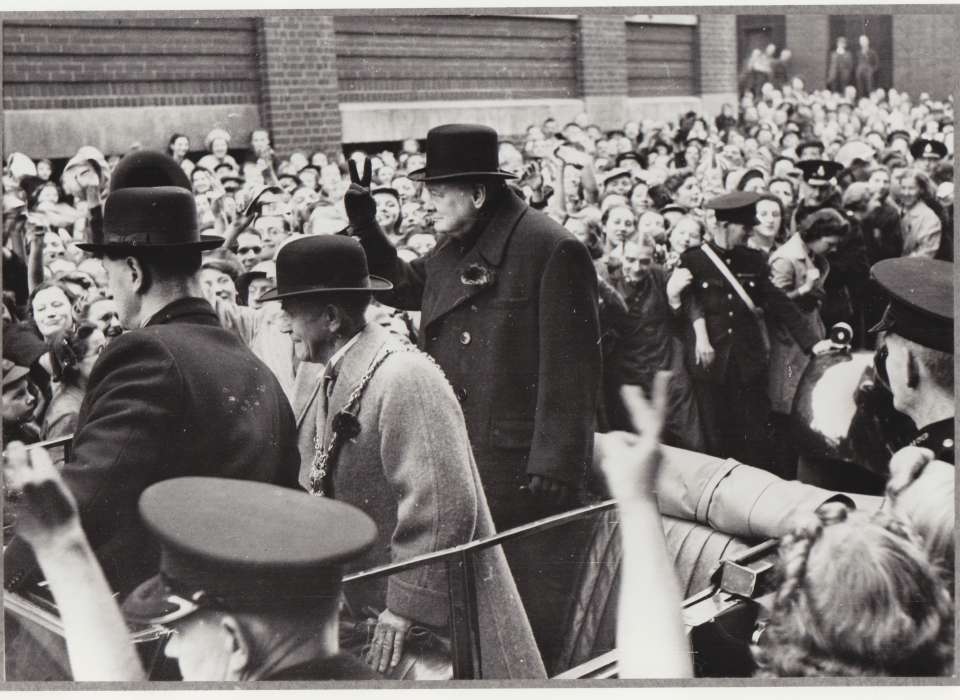“What aged war wouldst thou awake in me, Thou subtle world-old bitter Celtic voice? Thy sombre dance and harshness as of the sea Leap in my blood. Some sleeping memory Mutters a sullen music, answering thee. Old savage dreams within my brain rejoice…” From sonnet “Seafoam and firelight” by Dermot O’Byrne reportedly quoted by Arnold Bax on unexpectedly hearing pipe music on a London street.
Each November we have the privilege of publicly reflecting through music upon the personal sacrifice and resiliency that have sustained us and our world for another year.
Framed by two familiar works of Johannes Brahms, our program tonality moves from the seriousness of C minor to the triumph of C major. The opening rhythmic fanfare of Scherzo in C minor, short-short-short-long, has appeared in major works by Mendelssohn, Brahms, and Mahler among others ever since the iconic opening of Symphony No. 5 in C minor by Beethoven. (Coincidentally, the “∙∙∙—” motif also represents the letter “V” in the Morse Code developed in the 1830s; during WWII, it was a symbol for “Victory”!) This work, an upbeat, third movement Scherzo, was Brahms’s contribution to the four-movement work, later named for his musical motto frei aber einsam (free but lonesome), created by fellow composers to honor violinist Joseph Joachim, Brahms’s personal friend. The other composers included Albert Dietrich (movement 1), and Robert Schumann (movements 2 and 4).

The Oboe Quintet for oboe and string quartet by British composer Arnold Bax was first heard one-hundred years ago this year. It is a work in three movements centered around the key of G major/minor inspired by Bax’s frequent portrayals of Celtic/Irish song, dance, longing and suffering. The oboe to him evoked the sound of the Highland piper and the epic storyteller.
The first movement opens with the strings with an ending figure in both major and minor that launches the oboe into reverie. The second movement centers around a halting tune made of fragments from the distant past set in an alternating metric that confounds memory. And the last, employs the jig, an exuberant Irish dance that moves us from distant reverie into the present joy.
The strings are deployed in a full range of sounds from chordal hymn, to shimmering screen, pizzicato, setting and shifting the scene, initiating and echoing. Some of these techniques and the harmonic shifts are more typically heard in quartets of Debussy and Ravel (1893, 1903) than in those of Germanic masters from this time.
Celebrated American composer Kevin Puts has assembled his 2001 work, And Legions will Rise, for three virtuosos from different instrument families, not unlike last month’s differences between familiar tunes combined to live well together in the inspiring Piano Trio by Charles Ives. Violin, clarinet, and marimba—bowed, blown and struck—together deliver a message of resilience that is both universal and personal in the language of today. In 2001 Kevin Puts wrote:
“And Legions will Rise is about the power in all of us to transcend during times of tragedy and personal crises. While I was writing it, I kept imagining one of those war scenes in blockbuster films, with masses of troops made ready before the great battle. I think we have forces like this inside us, ready to do battle when we are at our lowest moments.”
Our concert closes with Brahms’s Piano Trio No. 2 in C major composed from 1880 to 1882. To his publisher Brahms wrote “you have not yet had such a beautiful Trio from me and very likely have not published one to equal it within the last ten years.” Brahms may have been hiding nagging doubts about his first Piano Trio, Opus 8 from 1854, which he later revised in 1889, or expressing greater confidence in his mastery of large instrumental forms after having completed and published three string quartets, three piano quartets, both string sextets, the horn trio, the piano quintet, his first and second symphonies, the violin concerto, and two piano concertos in the interim among many other works. By this time, he would also have been thinking about retirement, but would have heard Richard Mühlfeld play the clarinet solos in the second symphony and started dreaming about what beautiful music might come next. Perhaps four with clarinet?
Enjoy!
